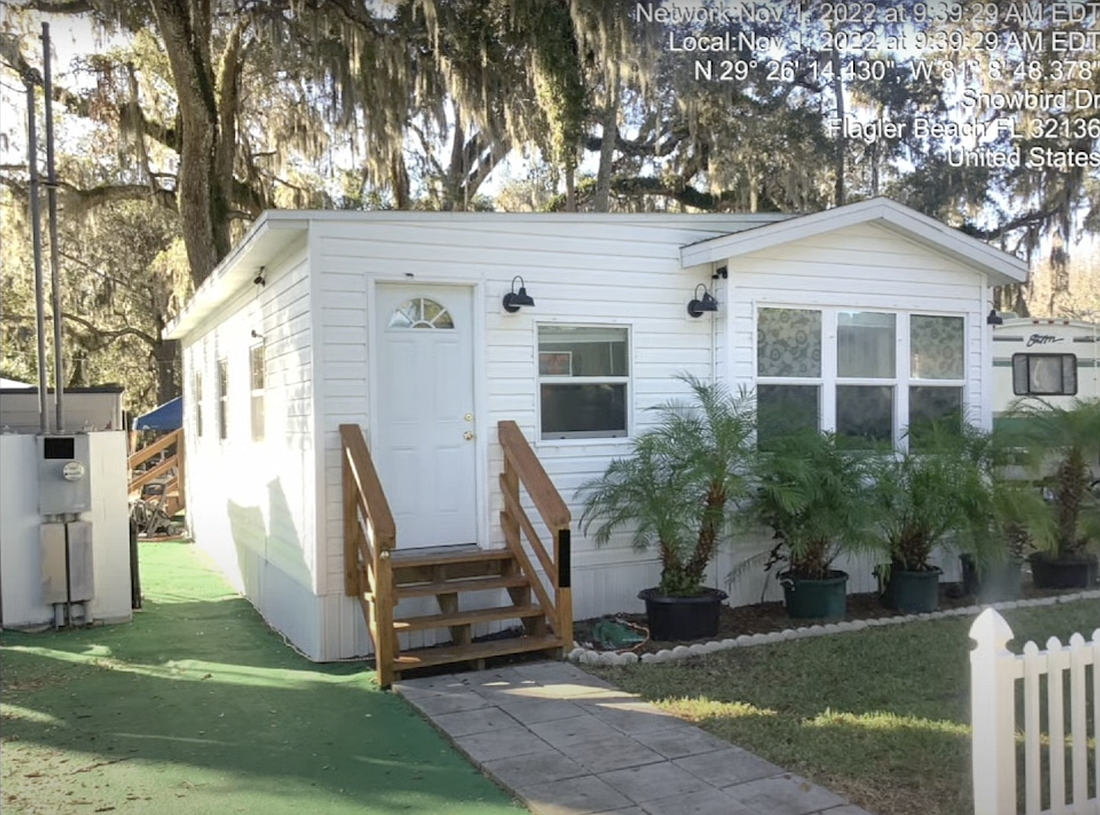- December 15, 2025

Thirteen residents of the Bulow Plantation RV Resort could still be facing eviction at the end of January.
These 13 residents are the remaining residents whose structures violate county code because they have attached permanent additions to the structures that are illegal in an RV campground — like decks or additional rooms. The additions, however, were built over the years, with management's knowledge.
Some residents had even purchased the structures with the illegal attachments already in place. After Flagler County notified Bulow’s management that the structures violated the county code, dozens of residents were facing evictions for being noncompliant until the Flagler County Commission stepped in last January.
County administrator Heidi Petito said at a Sept. 4 commission workshop meeting that the site’s development order allows accessory structures for the campground, like a clubhouse or meeting hall, but not for the individual campsites.
The permitted accessories that can be on the RV structures — like a deck or stairs into the structure — must be stand-alone and cannot be physically attached to the structures, she said.
The Flagler County Commission granted Bulow Plantation’s management six months to work with the residents to get all of the structures into compliance. That extension expired in July, but the commission granted another extension to the end of January 2025, with a three-month check in.
In January 2024, there were 62 structures that were not in compliance, Petito said. That number had been reduced to 20 by July.
Stan Martin, representing Bulow LLC, told the commission that the number was at 18 now, and another five would be brought into compliance by the end of October.
Of those five, Martin said, two residents were evicted over nonpayment of rent, and their structures will be removed. Management has reached agreements with the other three, who will also be removing their structures from the campground, he said.
Those numbers have not been verified by the county. He said Bulow has invited the county out to inspect the properties but was told staff would not be coming out to do that yet.
Attorney Sean Moylan said now that the number of noncompliant structures has been whittled down, the county should go in and confirm.
Martin said January likely wouldn’t end with 100% of the structures in compliance.
“We’re probably down to the people who just aren’t going to comply,” he said. “And then we have really one remedy under the law, and that’s eviction.”
Bulow RV campground resident Barbara Paige owns one of the remaining noncompliant structures. She said she bought her home in the campground section with the deck and additions already installed.
To remove them, she said it would cost her $9,000, and that would also leave a large hole in her home that she would then need to pay to have filled in. It isn’t something she can afford, she said.
Instead, she is working on finding someone to purchase the home from her. It’s been up for sale for five or six months, she said. Most potential buyers say it would be too expensive or difficult to move the home.
“I’m holding out because I have nowhere else to go,” Paige said. “…It breaks my heart. It’s killing me to live through this.”
Martin said that while Bulow had made agreements with residents who had purchased noncompliant structures from the company, Paige was not one of them.
Martin compared the situation to a homeowner who had purchased a home with a code violation — it was up to the owner to fix the violation and comply with county code.
Moylan said this situation isn’t quite the same as that example. While the management is working to come into compliance, the situation only got to this point because “they allowed it to happen and turned a blind eye.”
“They don’t have completely clean hands, but at the same time they’re trying to work this out,” Moylan said. “This is an intractable problem of local government that we’re trying to wrestle with.
Regardless, Moylan said, once the January deadline is reached, the county will have to make the difficult decisions for those structures remaining in noncompliance.
“You reach the point where you have this hard decision to make,” Moylan said. “At some point, we have to stick to the building code and we have to stick to the development order.”